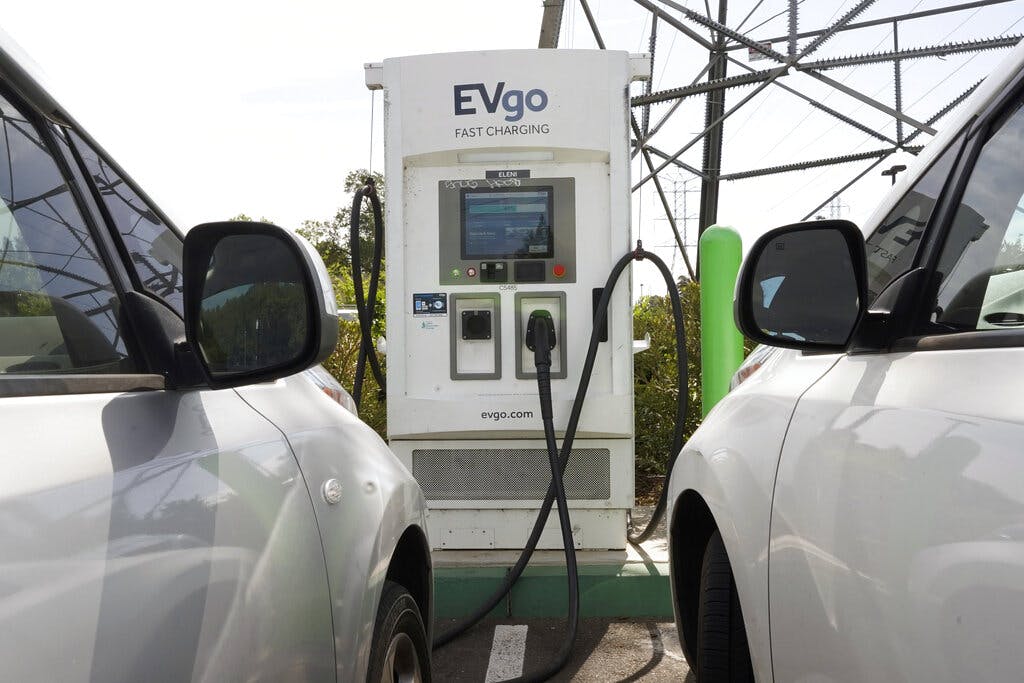Push for Electric Vehicles Is Stalling, Despite Government Backing
To make EVs attractive, advocates are using the power of the state.

The push to transition to electric vehicles is running into one roadblock after another as governments and corporations relearn the lessons of a century ago when gasoline-powered automobiles drove their battery-powered counterparts from the marketplace.
When given a choice, free people will decide how to best spend their money, but that doesn’t sit well with those who see electric vehicles as the future and are determined to ignore reality and the laws of physics to get there.
To make EVs attractive, advocates are using the power of the state. California has passed legislation banning new gas-powered vehicles by 2035, drawing hosannas from greens but ignoring the inconvenient truth that about 60 percent of America’s electricity comes from fossil fuels, a fifth of it from coal.
“By putting the cart before the horse when technology and infrastructure don’t yet exist,” I wrote in the Sun last August, California’s government “may do more damage to the environment than good and cause more pain for their citizens.”
So-called renewable sources of energy are nowhere near ready to carry the load. Amid a shortage of hydropower, coal is Communist China’s “only real option in the short term” analysts for the Australia and New Zealand Banking Group wrote in a report on Thursday, citing the EV “boom” as the cause.
Although TV commercials portray grinning drivers unplugging their cars like an iPhone and hitting the open road, this isn’t close to manifesting either. Chargers of the Level 2 variety, when you can find them, require hours to juice up batteries.
Forget leaving your car at the pump and running into the Flying J for a coffee and some Pop Rocks. You’ll be charging up longer and more often, in particular if you use accessories or drive in cold weather, which AAA found drains 40 percent of an EVs power.
“We plan meals around recharging the vehicles,” the editor-in-chief of Car and Driver, Tony Quiroga, wrote last month, calling it a “logistical nightmare.” While test driving BMWs i7 sedan, he noticed the range of 240 miles dropped almost 10 percent when he flicked on the heat.
Last June, a reporter for the Wall Street Journal, Rachel Wolfe, drove an EV from New Orleans to Chicago. “I spent more time charging it,” she wrote of the four-day trip, “than I did sleeping.” Imagine the impact on tourist spots and the truck-dependent supply chain of those wait times.
The same challenges killed John M. Studebaker’s electric cars 100 years ago. They had a range of 40 miles and America didn’t yet have the infrastructure to charge them. The 40 percent of steam-powered cars at the turn of the last century also lost the race.
Even with the Biden Administration offering the carrot of subsidies to go with California’s stick of legislation, companies are finding the EV market unsustainable. According to Ford, it loses over $60,000 on each vehicle it sells.
The Chevy Bolt is the most popular EV in America behind Teslas, but on Tuesday, the CEO of General Motors, Mary Barra, told investors that the company will cease production of the Bolt EV and Bolt EUV by January.
GM had marketed the Bolt by touting its 200-mile range, which is far by EV standards. Again, however, science intruded. The company has been forced to recall vehicles multiple times due to fire risks posed by the batteries and told drivers not to dare charge them inside.
Despite these problems, magical thinking dominates the EV issue. Last month the Energy Secretary, Jennifer Granholm, testified to the Senate in support of a U.S. Army plan to deploy all-electric vehicles, including battle tanks, by the next decade.
Even if the technology existed, imagine the pollution caused by trashing our entire fleet. President Obama learned this lesson with his “Cash for Clunkers” program, which the liberal Brookings Institute found cost $1.4 million per job created and failed to reduce carbon emissions.
Even saving the money that would otherwise be spent on fuel isn’t guaranteed. EVs cost more to operate and expect more states to follow the lead of Texas which just last week passed a bill charging EV owners $200 a year to make up the shortfall in gasoline taxes.
By pushing EVs and banning trusted gasoline-powered cars before technology and infrastructure can deliver, advocates are playing havoc with the American economy and way of life. It’s bad enough to put the cart before the horse, but even worse if you shoot the horse first.

